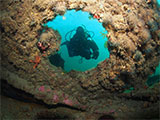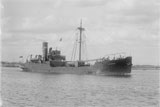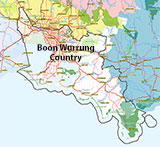Kakariki
![]() Wreck Dive |
Wreck Dive | ![]() Boat access
Boat access
![]()
![]()
![]()
Steel Steamer | Max Depth: 10 m (33 ft)
The Kakariki shipwreck, lies near Gellibrand Pile Light, Williamstown, Port Phillip. On 29 January 1937, the steel steamer collided with another steamer Caradale off Williamstown, sinking within minutes and killing five people. Police divers recovered the bodies of three of the five missing members of the crew.
Salvage was hampered by the vessel being stuck in four metres of mud. The wreck was eventually blown up, but parts of the mast, bridge and bow still remain.
There seems to be more of the Kakariki wreck nearby at:
Latitude: 37° 52.504′ S (37.87506667° S / 37° 52′ 30.24″ S)
Longitude: 144° 52.273′ E (144.87121667° E / 144° 52′ 16.38″ E)
Kakariki Shipwreck History — Built in 1926
The Kakariki was built in 1926 by Cochrane & Son Ltd, in Selby, England. The Units: unknown unit type given interstate trader had an overall length of approximately 190.2 ft (58 m), beam 31.4 ft (9.57 m) and draught 12.9 ft (3.93 m).
Kakariki Sinking — 29 January 1937
The Kakariki was sunk on 29 January 1937 as it headed for Yarraville near the end of a voyage from Strahan, Tasmania to Melbourne with a cargo of timber and ore. It collided with the Caradale, which was bound for Sydney. The Kakariki was struck between forecastle and mess room on the starboard side, leaving a hole 28 feet wide.
Five drowned as the vessel sank within three minutes. The Court of Marine Inquiry laid blame with Kakariki, but a later High Court judgment (26 July 1937) found against the Caradale.
The salvage operations were drawn out over several years, as the Board of Works put the job out to tender and repeatedly took the lowest bid, regardless of the applicant's experience. Several salvage companies lost large amounts of money attempting to move the vessel, and one company lost two staff members during salvage operations.
The Kakariki was eventually moved, in pieces, from the fairway in 1945, and sunk in deeper water.
See also, Trove: Sinking of Kakariki,
Australian National Shipwreck Database: Kakariki, and
Heritage Council Victoria: Kakariki.
Heritage Warning: Any shipwreck or shipwreck relic that is 75 years or older is protected by legislation. Other items of maritime heritage 75 years or older are also protected by legislation. Activities such as digging for bottles, coins or other artefacts that involve the disturbance of archaeological sites may be in breach of the legislation, and penalties may apply. The legislation requires the mandatory reporting to Heritage Victoria as soon as practicable of any archaeological site that is identified. See Maritime heritage. Anyone with information about looting or stolen artefacts should call Heritage Victoria on (03) 7022 6390, or send an email to [email protected].
Traditional Owners — This dive site is in the traditional Country of the Boon Wurrung / Bunurong people of the Kulin Nation. This truly ancient Country includes parts of Port Phillip, from the Werribee River in the north-west, down to Wilson's Promontory in the south-east, including the Mornington Peninsula, French Island and Phillip Island, plus Western Port. We wish to acknowledge the Boon Wurrung as Traditional Owners. We pay respect to their Ancestors and their Elders, past, present and emerging. We acknowledge Bunjil the Creator Spirit of this beautiful land, who travels as an eagle, and Waarn, who protects the waterways and travels as a crow, and thank them for continuing to watch over this Country today and beyond.
Kakariki Location Map
Latitude: 37° 52.479′ S (37.87465° S / 37° 52′ 28.74″ S)
Longitude: 144° 52.224′ E (144.8704° E / 144° 52′ 13.44″ E)
Datum: WGS84 |
Google Map
Added: 2021-02-10 03:13:46 GMT, Last updated: 2022-04-27 00:56:53 GMT
Source: Peter Taylor
Nearest Neighbour: Ester, 947 m, bearing 31°, NNE
Steel Steamer.
Built: Selby, England 1926.
Sunk: 29 January 1937.
Depth: 10 m.
[ Top ]
DISCLAIMER: No claim is made by The Scuba Doctor as to the accuracy of the dive site coordinates listed here. Should anyone decide to use these GPS marks to locate and dive on a site, they do so entirely at their own risk. Always verify against other sources.
The marks come from numerous sources including commercial operators, independent dive clubs, reference works, and active divers. Some are known to be accurate, while others may not be. Some GPS marks may even have come from maps using the AGD66 datum, and thus may need be converted to the WGS84 datum. To distinguish between the possible accuracy of the dive site marks, we've tried to give each mark a source of GPS, Google Earth, or unknown.




